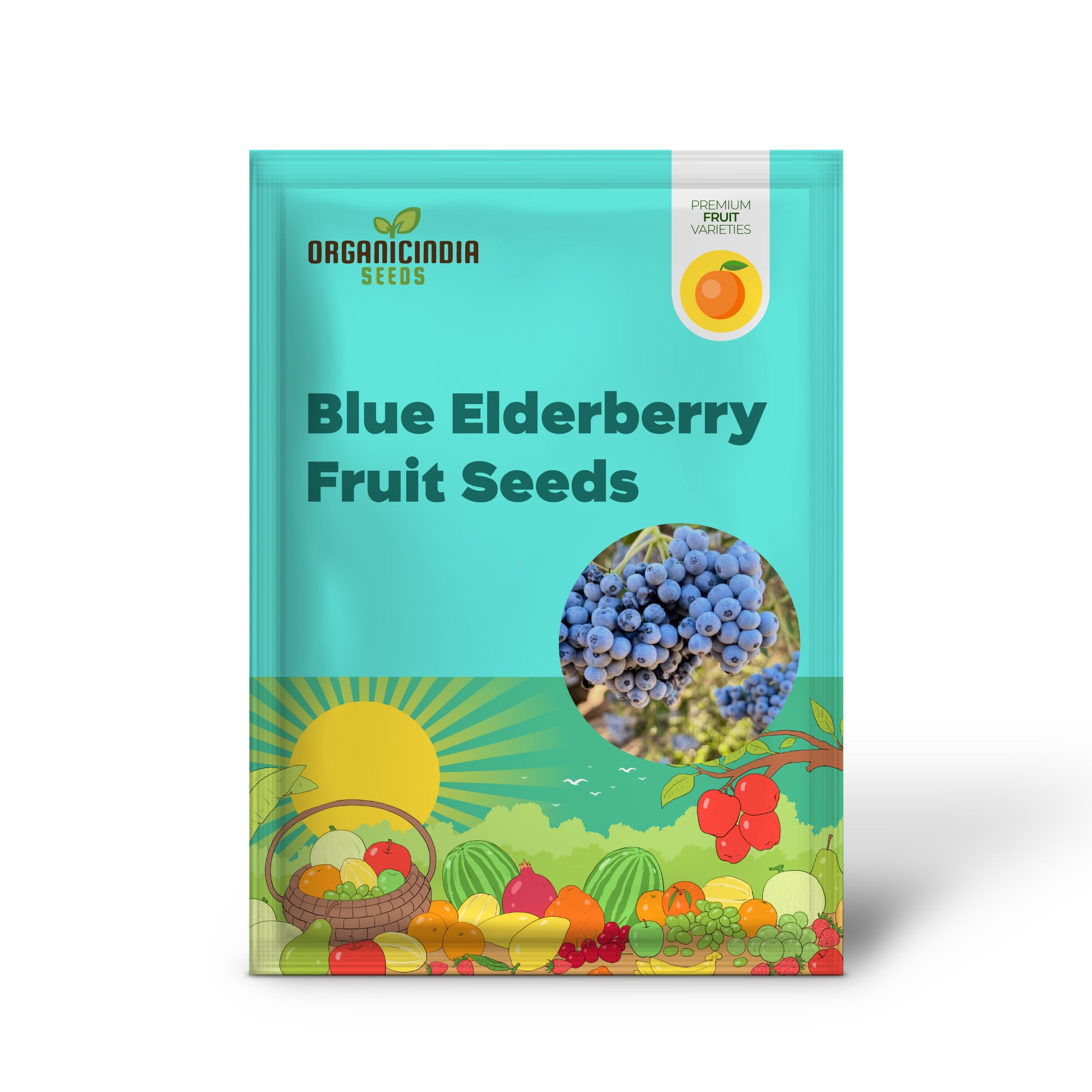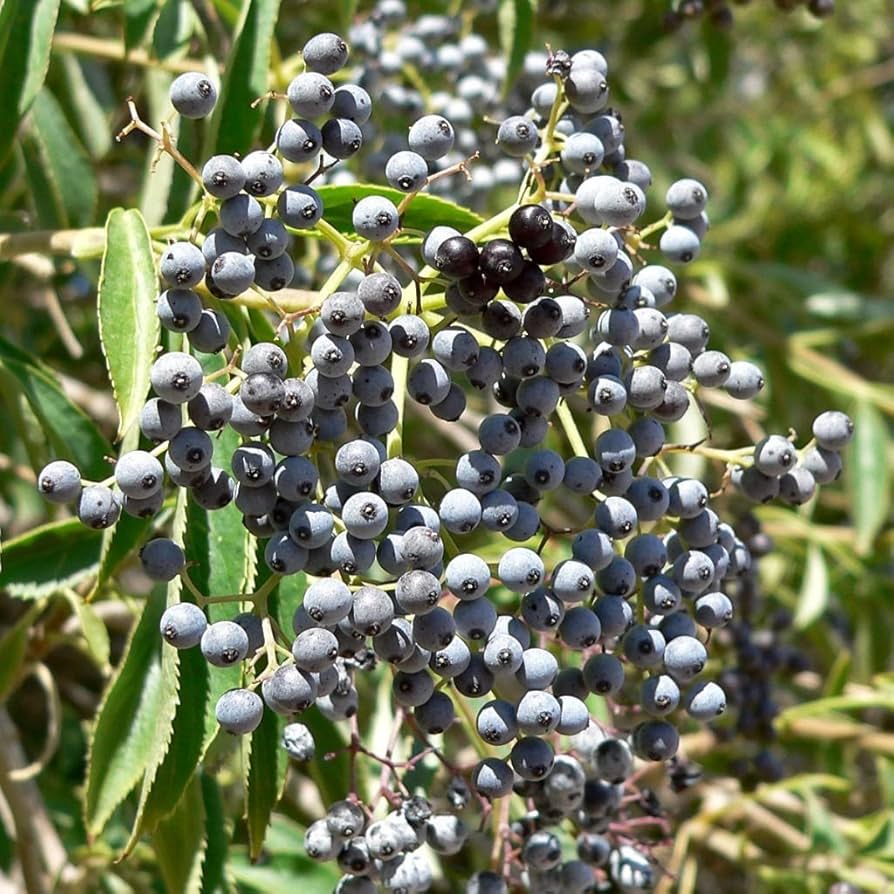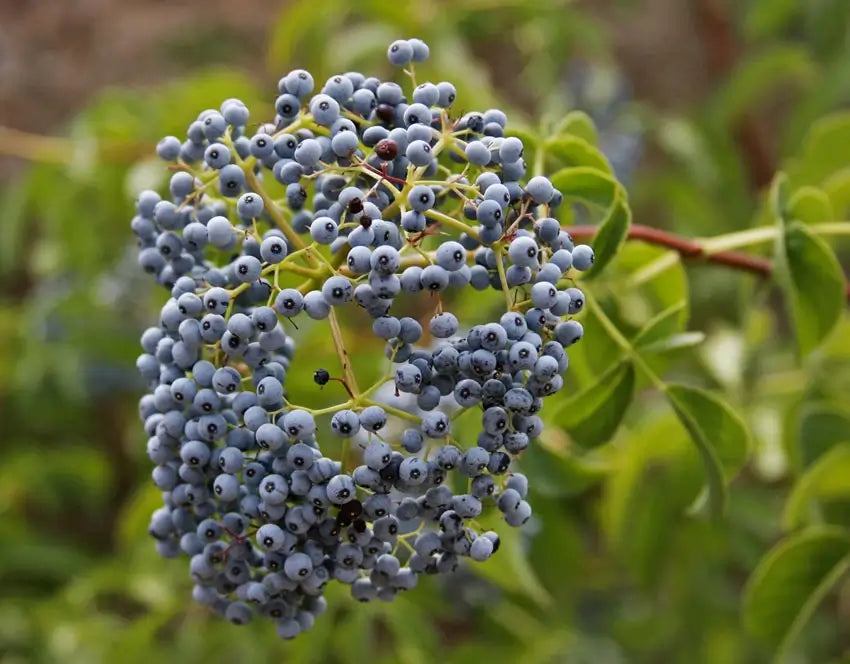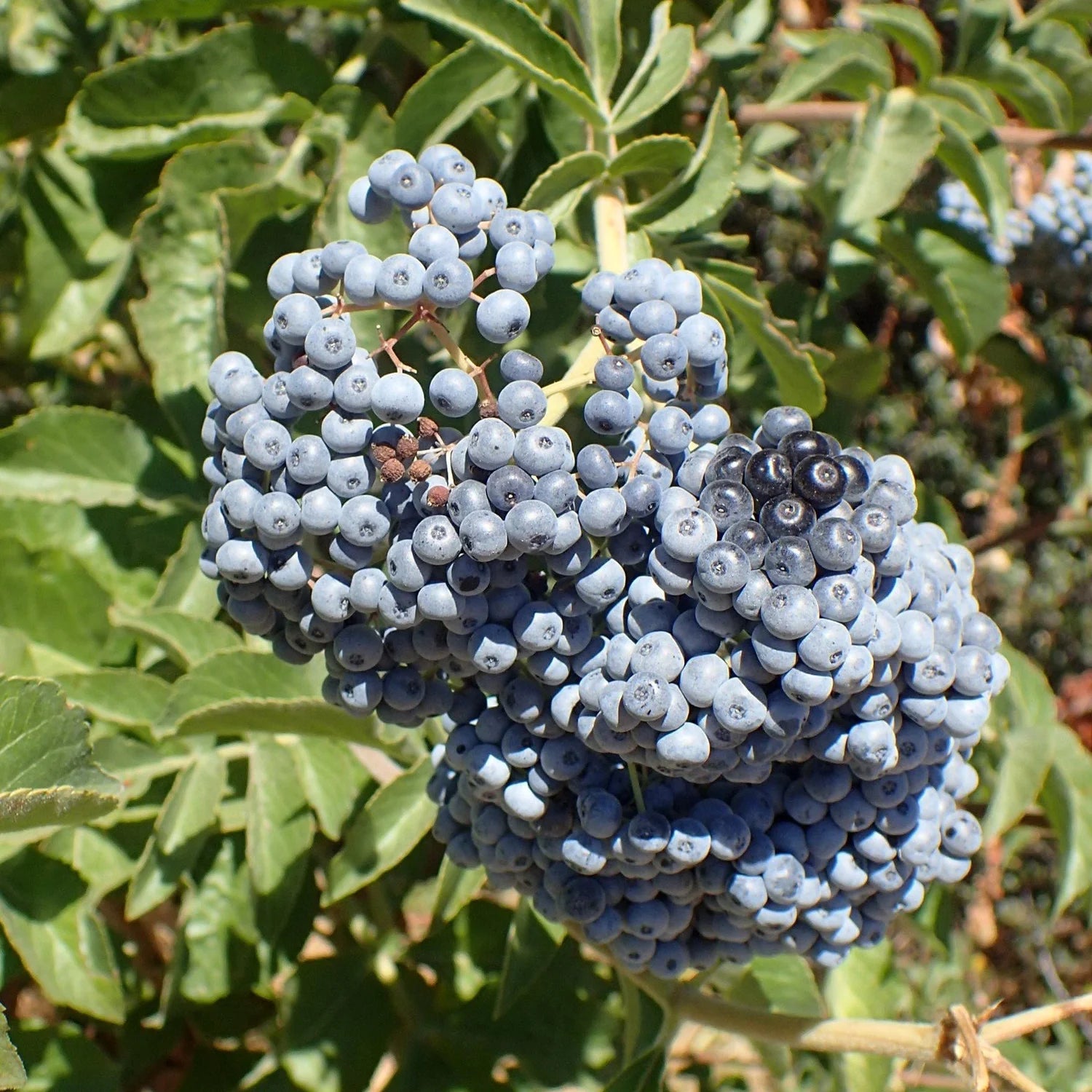






Free Shipping
Safe & Secure Payments
Nutrient-Rich Berries: Produces clusters of dark blue berries known for their antioxidant content.
Hardy & Productive: Cold-tolerant perennial shrub suited for various climates.
Non-GMO & Heirloom Seeds: Naturally bred seeds free from genetic modification.
Pollinator-Friendly: Attracts bees, butterflies, and beneficial wildlife.
Decorative & Edible: Ornamental white flowers followed by beautiful blue fruits.
Low-Maintenance Plant: Thrives in diverse soil types with minimal care.
Scientific Name: Sambucus cerulea
Common Name (US): Blue Elderberry
Plant Type: Deciduous Perennial Shrub
USDA Hardiness Zones: 3–10
Sun Exposure: Full Sun to Partial Shade
Soil Type: Well-drained loamy or sandy soil
Soil pH: 6.0–7.5
Growth Height: 6–15 feet tall
Spread: 5–12 feet
Bloom Season: Late Spring to Early Summer
Fruit Season: Late Summer to Early Fall
Fruit Description: Blue-black clusters of small, juicy berries
Seed Type: Non-GMO, Heirloom Variety
Water Requirements: Moderate; prefers evenly moist soil
Pollination: Cross-pollination (best with multiple plants)
Temperature for Germination: 65–75°F (18–24°C)
Germination Time: 30–60 days with cold stratification
Planting Depth: ¼ inch (0.6 cm)
Spacing: 6–10 feet apart
Lifespan: Long-lived perennial
Uses: Hedgerows, wildlife gardens, landscaping, natural berry production
Cold Stratification: Place seeds in a moist paper towel or sand and refrigerate for 60–90 days.
Sowing: After stratification, plant seeds ¼ inch deep in seed trays or pots with moist soil.
Transplanting: Move seedlings outdoors after frost risk has passed.
Sunlight: Provide full sun to partial shade for healthy growth.
Soil Preparation: Enrich planting area with compost or organic matter.
Watering: Water regularly, especially during flowering and fruiting.
Pruning: Prune older stems to encourage new growth and fruit production.
Choose options




